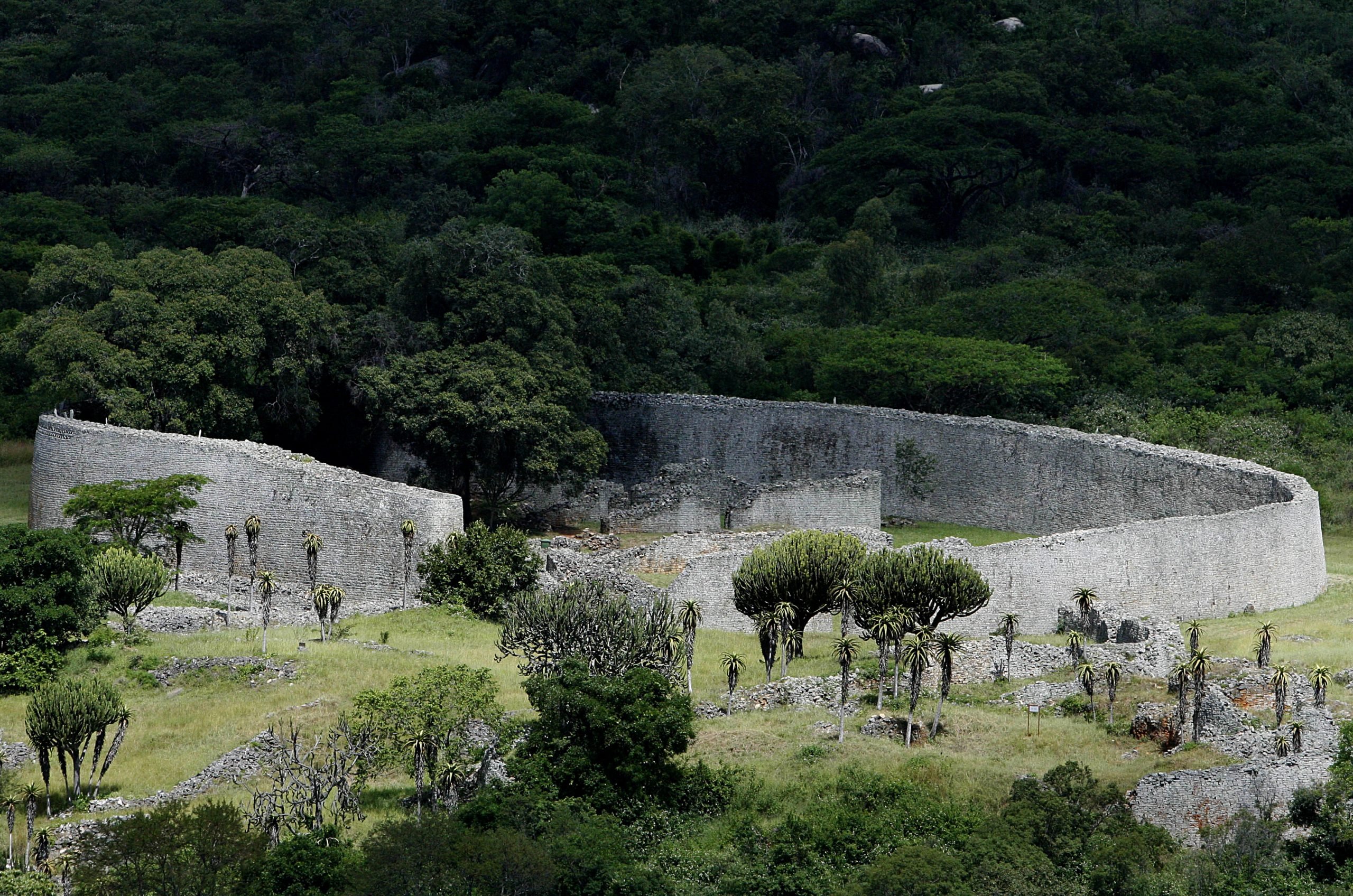
Nearly 20,000 Shona citizens once animated the 1,800-acre ruins of Great Zimbabwe. Sub-Saharan Africa has many zimbabwes, or stone villages, but this one is by far the most legendary. All that remains from the medieval capital is its awe-inspiring, stony skeleton. But, long after the Kingdom of Zimbabwe’s demise in the 15th century, Great Zimbabwe’s legacy endures. Shona people conducted rites here through the 19th century, and one of the stolen stone eagles that formerly adorned the city graces Zimbabwe’s flag.
There are 10 million Shona people around the world today—and there is much to learn about their Bantu-speaking ancestors, who first settled Great Zimbabwe in the 4th century C.E. They farmed, mined iron, and kept cattle, a culinary staple that also denoted social class.
During the 11th century, the Kingdom of Zimbabwe took over the region. Trade flourished. Two-fifths of the world’s mined gold came from the kingdom during its 300-year span, reported Slate. Traders flocked here, leaving Chinese ceramics, Persian pottery, Arabian glass, and European clothing—all of which now live in a museum among the ruins.
The Great Enclosure wall at the Great Zimbabwe Ruins. Photo: DeAgostini / Getty Images.
Great Zimbabwe’s first stones were laid around 900 C.E., and construction lasted 300 years. Upon its completion, Great Zimbabwe spanned complexes of hills and valleys and what is known as the Great Enclosure—all crafted from millions of stones fit together without mortar. Workers heated massive granite chunks in a fire and tossed cold water on them, naturally cracking them into brick-like bits.
The hill complex is Great Zimbabwe’s oldest section—and home to its king. The soapstone eagles probably sat atop columns here. Meanwhile, the Great Enclosure—a ring-shaped wall measuring 820 feet long and 36 feet high—remains Great Zimbabwe’s most iconic feature. It’s the largest pre-colonial structure south of the Sahara, and the second largest in Africa by surface area, outdone only by Egypt’s pyramids. A narrow passage leads to the Great Enclosure’s equally famed conical tower. The king’s wives, children, and servants likely lived here. Meanwhile, the Valley Complex below housed the area’s underlings from the 14th through 16th centuries.
The Hill Complex at the Great Zimbabwe Ruins Photo: DeAgostini / Getty Images.
Why Great Zimbabwe was abandoned, no one knows for sure. Some say there weren’t enough natural resources to support the city. Others cite the Kingdom of Mutapa, which took over the region around 1430 C.E.
Although Portuguese traders circulated accounts of Great Zimbabwe from their Arab cohorts throughout the 16th century, an American prospector became the first known caucasian to see the ruins himself, on a hunting trip in 1867. That prospector later showed them to German explorer Karl Mauch, who refused to believe that Black people built such a site. Instead, Mauch propagated an old European legend from the era where Great Zimbabwe was only known through rumors, which stated that foreigners like the Phoenicians or Babylonians built Great Zimbabwe as a second palace for the Queen of Sheba—as told in the bible.
In 1895, Great Zimbabwe became part of Rhodesia. Colonizers, tantalized by the goldmines purportedly situated around the Queen’s second home, looted Great Zimbabwe extensively, including all eight of its stone eagles. They’ve been restituted since.
A sculpture of a bird carved from soapstone temporarily installed at the Great Zimbabwe monument, 2020. Photo: Jekesai Njikizana / AFP via Getty Images.
Evidence contradicting the Queen of Sheba lore began mounting. In 1906, England’s first scientific dig at Great Zimbabwe revealed its true origins. In 1929, archaeologist Gertrude Caton Thompson substantiated his conclusion using modern science. But Rhodesia’s white-minority government held onto the myth until Zimbabwe won its independence in 1980 and took as its name this symbol of pre-colonial power.
Today, the Great Zimbabwe ruins are a UNESCO World Heritage Site, protected by the World Monuments Fund. There are efforts underway to care for the ruins, study their history, and return scholarship to a new generation of rightful inheritors, like Shadreck Chirikure.
Sometimes, archaeology gets big. In Huge! we delve deep into the world’s largest, towering, most epic monuments. Who built them? How did they get there? Why so big?